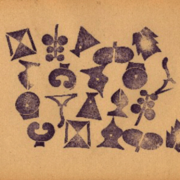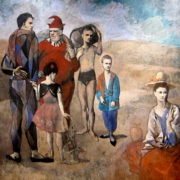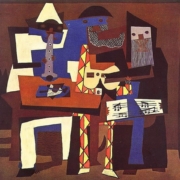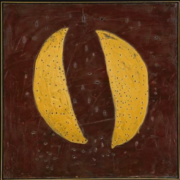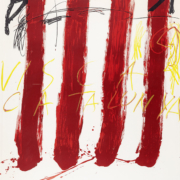Presentation, Disease and the Group
I have the pleasure of presenting NO 18 of Funzione Gamma: “Disease and the Group”. On the whole, the different contributions in this number have the aim of exploring the notion of disease and pointing out how such a notion acquires a greater complexity, and is enriched conjunctively with further keys to the reading and therapeutic potentialities when the phenomenon disease is seen and treated in a small analytical group. The interest in deepening the notion of disease has absorbed Claudio Neri and his chair (Basis of group dynamics) for many years by setting up connection with experts coming from different disciplines (history of medicine, anthropology, psychoanalysis and group psychoanalysis, hospital psychology, health psychology) so paying out modules for university lectures about this theme and comparison nearby other formative institutions. A first result of this research work, in attempt to integrate the different interdisciplinary relations in such a way to complete the multidimensional feature of the notion disease, is the dialogue between Neri and Girelli starting the reflections of this number. At the beginning, the dialogue traces the evolutions that the notion of disease in medical field has had along centuries. Such a choice is based at least on two reasons of methodological nature:
- The reason why historically speaking, the cultural matrix of the notion of disease is medical (as well its counter alter – the notion of cure).
- That’s why the psychological and psychoanalytic notion of disease rises and develops through the dialectical comparison with the medical model.
If we retrace the meaning that two notions of disease and cure have achieved in medicine, it is possible, in fact, to put in a more prominent place the peculiarity that they have acquired in psychoanalysis and in group psychoanalytic psychotherapy. With the same intention to connect the knowledge of disease more than fragment it, Neri’s and Girelli’s paper underline some teachings value coming from medical Hippocratic tradition, as comparable to the way to see disease in a small group. According to the same principle the attention is drawn on the fact that the logic based on a <<system of homologies […and] equivalences>>, presuming the interpretation of disease on the part of some primitives cultures, recalling in some way the <<mythic oneiric logic>> through which each small group attributes sense and meaning to its own events and those regarding its members so building a common path of healing from disease. Even before the contribution brought by group psychoanalysis, it is with the coming of psychoanalysis that the notion of disease was enriched with new implications as is shown in the dialogue. The idea of disease, proposed by psychoanalysis, has changed with the passing of time in accordance with different internal contributions to the movement, relating to the theories according to the human motivation and constituting conditions of an individual development oriented to health rather than to disease. A “read thread” has accompanied the psychoanalytic reflection in its own approach to disease: looking for identifying casualty in psychopathology or identifying those psychic workings which are no longer only somatic, those intervening in “falling ill” of each individual. All this had its first significant impact on the idea of diagnosis (Ellenberger 1970). It did not represent any longer a descriptive concept only encapsulating in a label, patient’s symptoms, but it is a psychodynamic valuation of a person, his/her abilities and his/her faults, trying to construct an explanation, exactly, for the reason why his/her symptoms so recovering the etymological meaning of the term diagnosis ( from Greek dia-gnosko, I know – I cross). A disease manifests itself through distinctive modalities of weaving relationships with ourselves; and with other significant people; a cure passes through the relationship with the analist. As Neri wrote in his paper: <<Freud and Psychoanalysis have discovered a particular type of the double of the disease and they have also offered an interpretation of it when the relationship between patient-doctor>>. Then it is recognised in the dialogue, in the psychoanalytic area both to Winnicott and Erickson to have offered, though in different terms, a conception of disease which in some points anticipates the conception which will be proposed by group psychoanalysis, especially for the attention paid to the environment of the individual falling sick. The dialogue concludes with remembering some important concepts in relation to the notion of disease already present in primitive cultures whose debtors we are to anthropological research. To other works of this issue deepening many aspects relating to the connection between disease and the group then continuing ideally the dialogue. Such a connection is complex and can be explored from different points of view, not only by assuming the vertex disease but even by assuming the group’s. If we want only to give an example starting from the authors’ contributions we can think about the group: as a “subject” of disease, that is the group which can make us sick but also the group which can cure us (de Bellis, Friedman, Lombardozzi): as an “ occupied space” of disease, for example family-group of a sick person (Del Lungo et al), the group-institution where the disease is cured (Di Leone et al) the group-place of training where one discusses of disease (Agresta); as “a technical device” to see and heal disease which will be different if the group is conducted in a private setting or conducted in an institutional setting (Giardina). Each of the authors has deepened one or more than the aspects. It seems now important to remember Lichtenberg’s contribution (1989) to the reformulation of human motivation by continuing the speech about internal developments of psychoanalysis. The idea supported by different interacting motivational systems, each of which succeed over the others under determined circumstances but never in an absolute way. It already in itself enlightens the complexity of our needs (and the we the wealth of the necessary answers to satisfy them). Perhaps in this presentation it is nevertheless especially significant the hypothesis, (between these systems) of the attachment- affiliation system: <<[…] I believe there may be an innate, preprogrammed pattern to affiliate that begins with a young child’s regarding his or her parents and siblings not only as individuals but as a unit – the family. This proposal requires experimental and observational verification. If it is true, it means that the small child can gain pleasure in intimacy and the sense of belonging not only from the ministrations of each caregiver, but also from the family group. Thus, children with disturbed individual relations may have another source for deriving support […] I regard the motivation for affiliation to be as integral to development and as universal in its occurrence as that of attachment>>. (Lichtenberg 1989, pp. 116-117). In evolutionary terms, this expresses necessarily that is motivation to establish relationships with others (where attachment is referred to relationships with single individuals and affiliation with groups) it is a primary motivation of human nature. This means that for a healthy development of the individual the relationships established both with a significant individual and with a group of significant individuals are necessary as well as, of course, the affections connected with these relations. And therefore the group becomes central in the development orientated either towards health or disease, as well as in the process of cure. In this issue, Friedman reformulates some nosographic categories as “interpersonal” in the light of the hypothesis of a casualty of psychopathology delightfully relational and for this reason, he sees in the group the elective place for the cure. De Bellis, Di Leone et al.’ papers retrace respectively two processes of cure in an institutional area, one activated by a group-équipe hospital for a man suffering from organic invalidating progressive pathology and one by group of patients of a mental ward. De Bellis wrote: <<[…] From a groupal vertex is to be considered that the more doctors involved to cooperate, the more their usual procedure forces them to work adjacent, sometimes contiguous, but rarely together; or better always maintaining the limits of their own specialities. […] In the situation described, instead, the features of the patient’s personality, his life history, his disease violated all the usual schemata, so obliging the staff to take charge on “ immaterial forms”- the internal substances in a relation – which are usually defined all together as “psychological aspects”. Working in group, just from the beginning, it seemed to me to be the natural energy or resource to face the constant and brutal oscillations between omnipotence and impotence which each of us is subjected to>>. So Di Leone and his colleagues, in the perspective of Self- Psychology applied to groups describe as << The group as idealized self-object can be perceived as an “empathic force” that the members fell they can use for their own needs” specifying that “The group cannot replace the patient but can support him/her by sustaining the blocked functions and lightening him/her from the burden of disease suffocating him/her; it is as if the disease, through the activity of the group, “detached” a little off and this allows new opennesses>>. Giardina, through his own contribution to the issue, inserts these reflections, on the level of theory and technique illustrating in a very clear way instruments and meanings of the setting of a private and institutional group. Del Lungo et al’s paper refers to a pattern of psychological containment for the family members of the patients who had a surgical operation with “Policlinico Gemelli” in Rome by testifying how the emotional implications of the disease even a “surgical operation”, involve the family group and are significant variable in the process of post-operative recovery. Agresta’s paper deepens the use of the group as a pattern to facilitate the relationship doctor-patient, according to the tradition started by Balint with and then in the final analysis, as a process to facilitate the effectiveness of the treatment of disease. Lombardozzi’s paper brings a further enrichment of view in comparison with disease and cure by reporting the anthropological meaning of these two notions and by inserting this point of view in group psychoanalysis: <<It is possible to establish an important point of connection between traditional therapies in “native” or “folkloristic” terms and group psychoanalytic psycho-therapy. This can be seen in the notion of effectiveness that is connected to the relationship between symbol and ritual activity narration. In group psychoanalysis, the function of “effective narration” has been highlighted.[…] Here, in both an inherent ritual context and symbolic dimension and in the field of a group psychoanalytical dimension, we try to recognise the important areas in order to face up to the condition of pain and suffering of the illness and trace it to shared possibilities of sense. The “sense of the illness” should be correlated to specific conditions of existence that are laid out in the culture and each time redefine new notions and categories of illness and therapeutic ways of curing it>>.
I would would like to conclude by drawing the attention on the cover painting “Then and Now” whose authoress is D. Henegan. The painting can be considered as an ouverture of the issue and means to point out the emphasis between our histories, our living way, our falling disease such as our dynamism and the disease-event transformation possibility.
References
Ellenberger, H.F. (1970). The Discovery of the Unconscious. The History and Evolution of Dynamic Psychiatry. New York: Basic Books.
Lichtenberg, J.D. (1989). Psychoanalysis and Motivation. New Jersey: The Analytic Press, Inc., Hillsdale.
Neri, C. (1998). Group. London and Philadelphia: Jessica Kingsley Publishers .


